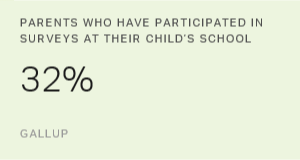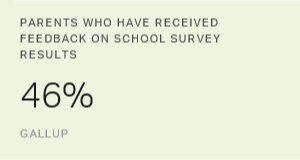State Schools Chief Tom Torlakson Selects California High School Students to the 2017 U.S. Senate Youth Program

SACRAMENTO—State Superintendent of Public Instruction Tom Torlakson today announced two outstanding high school students to represent California in the 55th annual United States Senate Youth Program (USSYP), sponsored by the William Randolph Hearst Foundation.
Samuel Goidell of Davis (Yolo County), a senior at Davis Senior High School in the Davis Joint Unified School District, and Amira Chowdhury of Glendale (Los Angeles County), a junior at Herbert Hoover High School in the Glendale Unified School District, were selected for their outstanding scholastic achievement, leadership qualities, and commitment to their schools and communities.
Torlakson also named two alternates in the event that one or both of the delegates are unable to attend the program. The first alternate is Michael Tseitlin of Sunnyvale (Santa Clara County), a senior at The Harker School, a private school in San Jose. The second alternate is Stuti Grover of Cypress (Orange County), a senior at Oxford Academy in the Anaheim Union High School District.
"These four students are amazing individuals who have demonstrated significant leadership abilities and have contributed much to their schools and communities while maintaining strong and rigorous academic schedules, “ Torlakson said. “I am encouraged by their passion for public service and their desire to make this world a better place. These young people make me optimistic for our future.”
The delegates and alternates are scheduled to be recognized by the State Board of Education during its January 11-12, 2017, meeting in Sacramento.
To qualify for the program, high school juniors or seniors must hold student body office or other elected or appointed civic or educational organization and express an interest in pursuing a career in public service. They are then nominated by their high school principal.
A selection committee from the California Department of Education (CDE) reviews eligible nominees, and Torlakson selects the awardees based on the quality of the application, academic achievement, interpersonal and communication skills, knowledge of American government and history, involvement in school and community activities, demonstrated qualities of leadership, and extracurricular activities.
The USSYP provides a yearly opportunity for selected students to gain an in-depth view of the Senate and the federal government overall as well as a deeper understanding of the legislative, judicial and executive branches, according to the national United States Senate Youth Program’s Overview  Web page. The program provides a foundation of knowledge and encouragement for those considering a future of public service.
Web page. The program provides a foundation of knowledge and encouragement for those considering a future of public service.
Two student leaders from each state, the District of Columbia, and the Department of Defense Education Activity each receive a $10,000 scholarship and attend a one-week all-expenses paid trip to Washington, D.C. from March 4–11, 2017.
For more information, please visit the CDE's United States Senate Youth Program Web page.
The following are synopses compiled from their applications:
Samuel Goidell — Delegate
Samuel Goidell of Davis (Yolo County), is a senior with a 4.4 grade point average at Davis Senior High School in the Davis Joint Unified School District. He currently serves as Student Body President as well as Education Policy Director with the California Association of Student Councils, which provides leadership development and training. He was also a top finalist-candidate for the Student Board Member position on the California State Board of Education. He wants to major in political science and international relations and either get a law degree or master’s degree in public policy. His career goal is to someday become the White House Chief of Staff.
Amira Chowdhury — Delegate
Amira Chowdhury of Glendale (Los Angeles County), is a junior carrying a 4.28 grade point average at Herbert Hoover High School in the Glendale Unified School District. She serves as Junior Class President. Her school activities include Founder/President of the Political Club, President of the Distinguished Scholars Academy, President of the Debate Club, Vice President of the Key Club, and membership in the California Scholarship Federation and the National Honor Society. She has volunteered on presidential and city council campaigns, as well as the Los Angeles Kidney Walk and Aids Walk and Relay for Life. She plans to double major in political science and economics and hopes to someday be a state legislator or a law professor.
Michael Tseitlin — First Alternate
Michael Tseitlin of Sunnyvale (Santa Clara County), is a senior a 4.4 grade point average at The Harker School, a private school in San Jose. He serves as Senior Class Secretary and is Varsity Captain of his school’s Water Polo team, leading them to be the CIF State Academic Champions and also Captain of his school’s championship Debate Team. He has over 2,000 community service hours as a tutor in both Russian and Hebrew as well as with Nova Ukraine, a non-profit organization which raises awareness about the Ukraine. He would like to study a mixture of International Relations, Economics, Neuroscience, and Language and Cultural Studies. He plans to join the U.S. Foreign Service, working abroad as a diplomat followed by law school.
Stuti Grover — Second Alternate
Stuti Grover of Cypress (Orange County), a senior with a 4.57 grade point average at Oxford Academy in the Anaheim Union High School District. She is Student Body President where she presides over class committees and plans all class activities. She is a Varsity competitor and mentor on the Oxford Speech and Debate Team, ranking 27th in the nation in Public Forum Debate. A National Merit Semifinalist and AP Scholar with Distinction, Stuti volunteers as a teacher’s aide, helping students in subjects where they are struggling. She wants to major in political science or law and pursue a master’s degree in international relations. Then, she would like to become one of the few Indian female ambassadors for the U.S. and also perform volunteer service domestically and internationally.# # # #
Tom Torlakson — State Superintendent of Public Instruction
Communications Division, Room 5206, 916-319-0818, Fax 916-319-0100
Communications Division, Room 5206, 916-319-0818, Fax 916-319-0100

































